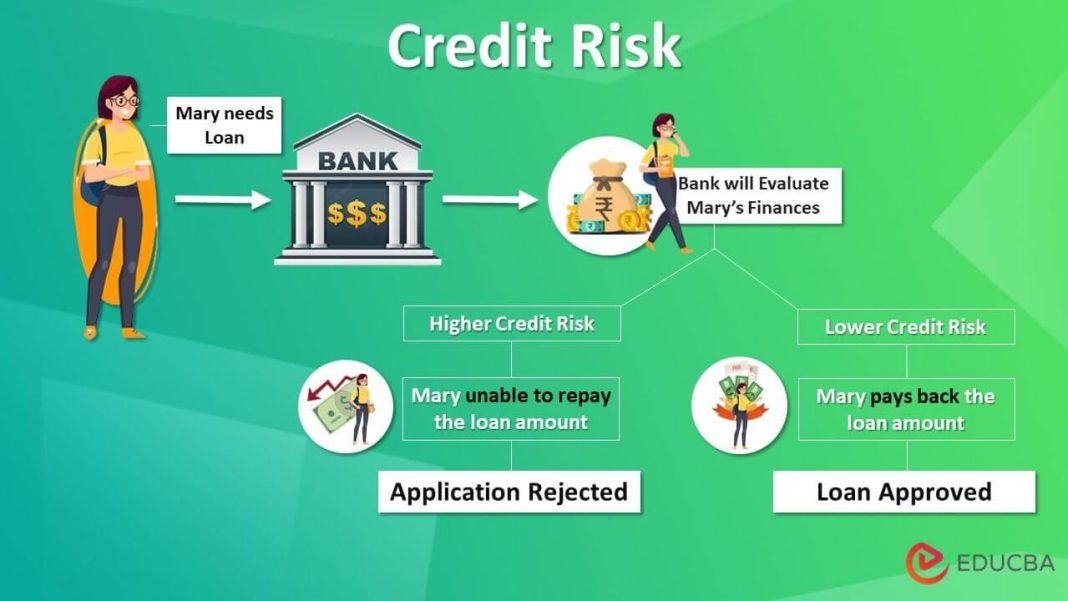In the intricate dance of finance, where numbers waltz and economies pivot, credit risk emerges as the enigmatic partner whose influence can sway the entire performance. As the lifeblood of lending decisions, credit risk is both a sentinel and a siren, guiding financial institutions through the turbulent seas of uncertainty while whispering promises of profit and peril. This article delves into the heart of credit risk, unraveling its complexities and examining its profound impact on lending decisions. With an authoritative lens, we explore how this crucial element shapes the strategies of banks and lenders, influencing not only their bottom lines but also the broader economic landscape. As we embark on this exploration, we invite you to discover the delicate balance between risk and reward, where informed decisions can spell the difference between prosperity and pitfall.
Understanding Credit Risk Dynamics in Modern Lending
In the ever-evolving landscape of modern lending, the dynamics of credit risk play a pivotal role in shaping lending decisions. Financial institutions are continually refining their risk assessment models to keep pace with changing economic conditions and consumer behaviors. The ability to accurately evaluate credit risk is not just about safeguarding the lender’s interests but also about ensuring that credit is extended to those who are most likely to repay. This delicate balance requires a nuanced understanding of several factors, including the borrower’s credit history, current financial status, and even macroeconomic indicators.
Key factors influencing credit risk dynamics include:
- Borrower Creditworthiness: Analyzing credit scores and repayment history to gauge reliability.
- Economic Environment: Considering the impact of inflation, unemployment rates, and market volatility.
- Regulatory Changes: Adapting to new compliance requirements that affect lending practices.
- Technological Advancements: Leveraging data analytics and AI to enhance risk prediction models.
By integrating these elements into their decision-making processes, lenders can better manage risk and foster a more resilient lending ecosystem.

Assessing Borrower Profiles: Key Indicators and Red Flags
In the realm of credit risk assessment, a meticulous evaluation of borrower profiles is paramount. Key indicators such as credit scores, income stability, and debt-to-income ratios form the backbone of this evaluation. A high credit score often signals responsible financial behavior, while a stable income provides assurance of the borrower’s ability to meet repayment obligations. Additionally, a low debt-to-income ratio is a positive indicator of financial health, suggesting that the borrower is not over-leveraged.
However, red flags can emerge, necessitating a cautious approach. A history of late payments or defaults can undermine trust, signaling potential repayment issues. Frequent credit inquiries might suggest financial distress or over-reliance on credit. Moreover, discrepancies in reported income or employment history can indicate potential fraud. By identifying these warning signs early, lenders can make informed decisions, balancing risk with opportunity in their lending strategies.
Strategic Risk Mitigation: Tools and Techniques for Lenders
In the intricate landscape of lending, effectively mitigating strategic risk is paramount to maintaining a robust financial portfolio. Lenders can leverage a variety of sophisticated tools and techniques to navigate the complexities of credit risk. Data analytics stands at the forefront, offering lenders the ability to scrutinize vast amounts of financial data, enabling them to make informed decisions with precision. By employing advanced algorithms and machine learning models, lenders can predict potential defaults and adjust their strategies accordingly. Stress testing is another critical technique, allowing institutions to simulate adverse economic scenarios and assess their resilience. This proactive approach helps in identifying vulnerabilities and crafting strategies to bolster financial stability.
Moreover, risk-based pricing empowers lenders to tailor interest rates and loan terms based on the borrower’s risk profile, ensuring a balanced risk-reward equation. Credit derivatives offer a layer of protection, allowing lenders to transfer risk without selling the underlying asset. In addition, portfolio diversification is a timeless strategy, spreading exposure across various sectors and geographies to minimize the impact of any single default. By integrating these tools and techniques, lenders can not only safeguard their assets but also enhance their competitive edge in an ever-evolving market.
Enhancing Decision-Making: Best Practices for Risk-Adjusted Lending
Incorporating risk-adjusted strategies into lending decisions is crucial for maintaining a robust credit portfolio. To effectively enhance decision-making, financial institutions should adopt a multifaceted approach that combines both quantitative and qualitative assessments. Leveraging advanced analytics and machine learning algorithms can provide deeper insights into borrower behavior, enabling lenders to predict potential defaults with greater accuracy. This proactive stance allows for more informed decisions, aligning lending practices with the institution’s risk appetite.
- Comprehensive Risk Assessment: Evaluate not just the borrower’s credit score, but also their cash flow, industry trends, and economic conditions.
- Dynamic Risk Models: Regularly update risk models to reflect current market conditions and borrower circumstances.
- Holistic View: Consider both internal and external factors, including regulatory changes and geopolitical events, that could impact credit risk.
- Stakeholder Collaboration: Foster communication between risk management teams and lending officers to ensure alignment in risk assessment and decision-making processes.
By integrating these best practices, lenders can not only mitigate potential losses but also capitalize on opportunities that may have been overlooked with traditional risk assessment methods. This strategic approach to risk-adjusted lending not only safeguards the institution’s financial health but also enhances its competitive edge in the marketplace.





